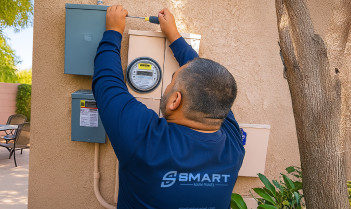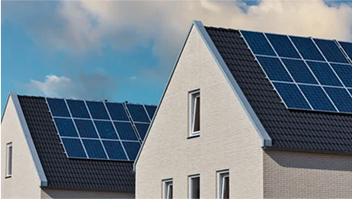Date
Energy Monitoring: Understanding the Basics for Smart Living Nearby
.jpg)
The Importance of Energy Monitoring for Smart Living
Energy monitoring plays a vital role in creating a smart living environment. It involves the use of advanced technologies to track and analyze energy consumption patterns in residential buildings. By understanding how and when energy is used, homeowners can make informed decisions to optimize energy efficiency, reduce waste, and ultimately save on utility costs.
Benefits of Energy Monitoring Systems
Energy monitoring systems offer several benefits that contribute to smart living. Let’s take a closer look at some of these advantages:
1. Real-time Energy Usage Tracking
Energy monitoring systems provide real-time data on energy usage, allowing homeowners to monitor their electricity consumption at any given moment. This information is typically displayed on a user-friendly interface or mobile app, making it easy to track and analyze energy usage patterns. With real-time insights, homeowners can identify areas of high energy consumption and take immediate action to reduce waste.
2. Cost Savings
By closely monitoring energy usage, homeowners can identify opportunities for cost savings. Energy monitoring systems highlight energy-intensive appliances or devices that may be contributing to high energy bills. Armed with this knowledge, homeowners can make informed decisions to reduce energy consumption and find more energy-efficient alternatives.
3. Conservation of Resources
Energy monitoring systems promote the conservation of resources by encouraging responsible energy consumption. With access to real-time data, homeowners can identify inefficient energy usage habits and make necessary adjustments. By optimizing energy consumption, homeowners not only reduce their environmental footprint but also contribute to a sustainable future.
4. Detection of Energy Leaks and Faults
Energy monitoring systems can detect energy leaks and faults within the electrical system. By continuously monitoring energy usage patterns, these systems can identify abnormalities such as sudden spikes or drops in power consumption. This early detection allows homeowners to address potential issues before they escalate, minimizing the risk of electrical malfunctions or fire hazards.
5. Integration with Other Smart Home Devices
Energy monitoring systems can seamlessly integrate with other smart home devices, creating a centralized and interconnected smart home ecosystem. For example, if an energy monitoring system detects that a particular appliance is consuming excessive energy, it can trigger other smart devices to turn off or adjust settings to optimize energy usage.
Installation Process and Compatibility
The installation process for energy monitoring systems can vary depending on the specific system and its integration requirements. However, in most cases, it involves the following steps:
1. Assessing Energy Monitoring Needs
Prior to installation, homeowners should assess their energy monitoring needs. This involves understanding the specific goals and objectives they want to achieve through energy monitoring. For example, some homeowners may prioritize cost savings, while others may prioritize energy conservation or the detection of energy leaks and faults.
2. Choosing the Right Energy Monitoring System
There are various energy monitoring systems available in the market, each with its own set of features and compatibility requirements. Homeowners should research different options and choose a system that aligns with their needs and integrates seamlessly with their existing smart home devices.
3. Hiring a Licensed Electrician
Once the right energy monitoring system is selected, homeowners should hire a licensed electrician to install the system. This ensures proper wiring and integration with the existing electrical panel. It is essential to hire a qualified professional to ensure a safe and reliable installation process.
4. Configuring and Connecting the System
After installation, the energy monitoring system needs to be configured and connected to the homeowner’s smart devices. This step may involve syncing the system with a mobile app or integrating it with a smart home hub. The manufacturer’s instructions should be followed carefully to ensure seamless connectivity.
5. Testing and Calibration
Once the installation and connection process is complete, it is crucial to test the energy monitoring system and calibrate it accordingly. This may involve verifying real-time energy usage data accuracy and ensuring accurate reporting of energy consumption. Regular testing and calibration help maintain the system’s performance and accuracy over time.
Conclusion
Energy monitoring is a valuable tool for creating a smart living environment. It provides homeowners with real-time insights into energy consumption patterns, enabling them to optimize energy efficiency, reduce waste, and save on utility costs. By detecting energy leaks and faults, promoting resource conservation, and integrating with other smart home devices, energy monitoring systems offer numerous benefits for homeowners. The installation process involves assessing energy monitoring needs, choosing the right system, hiring a licensed electrician, configuring and connecting the system, and testing and calibrating it. By embracing energy monitoring, homeowners can take control of their energy consumption and contribute to a more sustainable future.
To learn more about how energy monitoring systems can enhance your smart living experience, visit Smart Main Panel.



